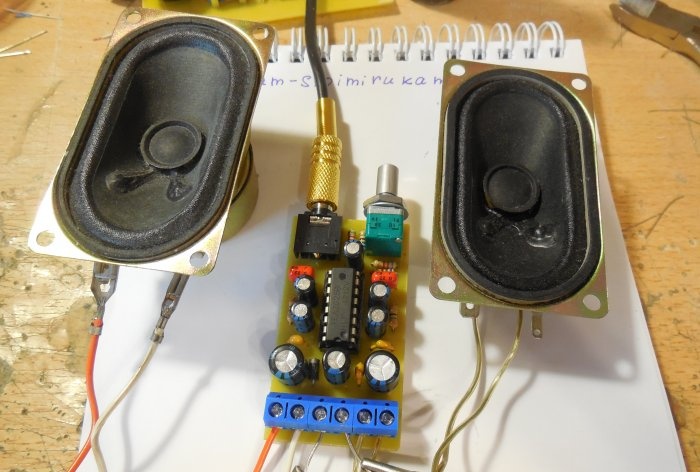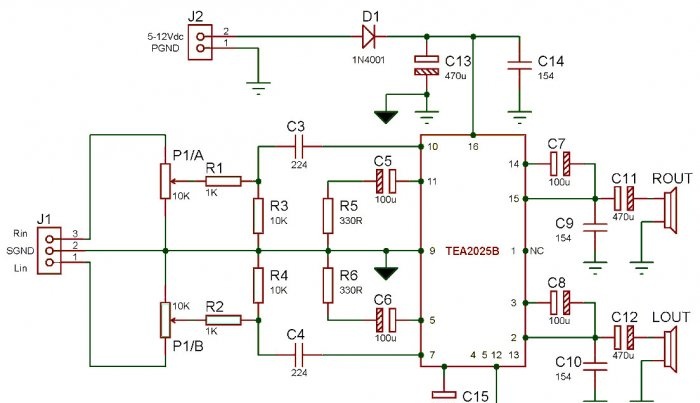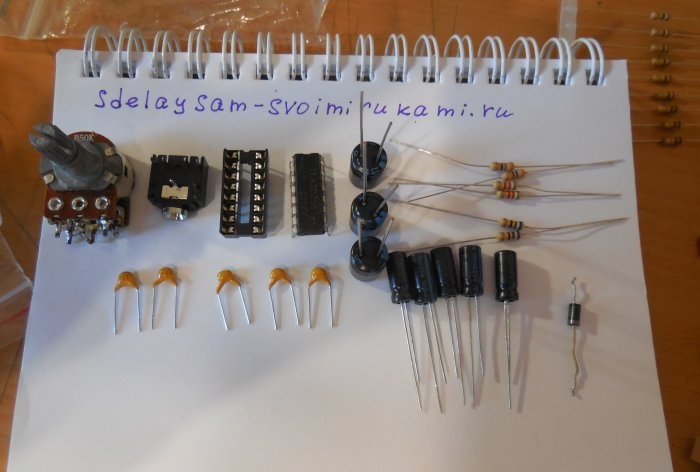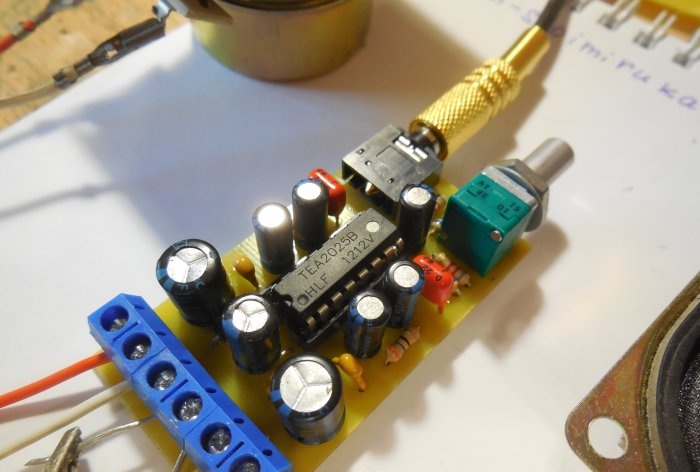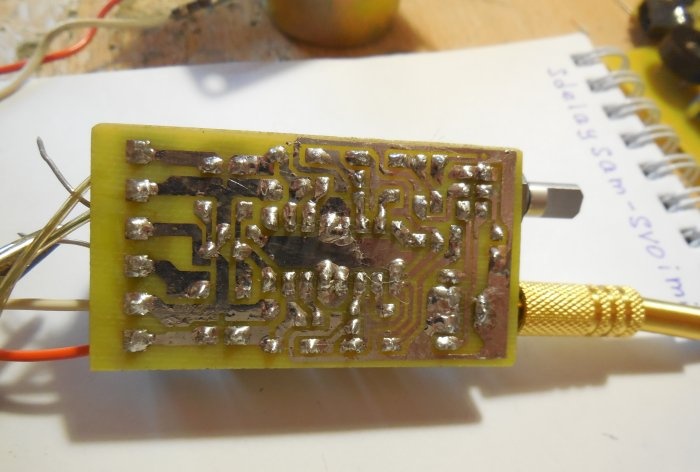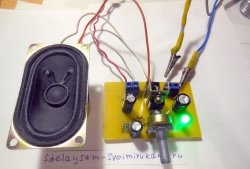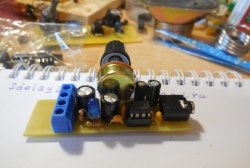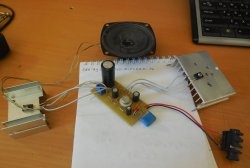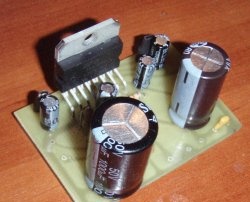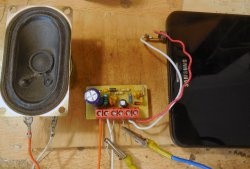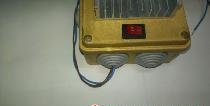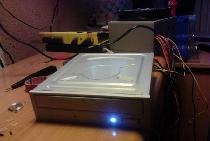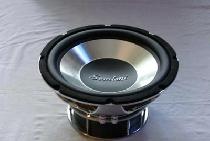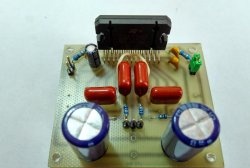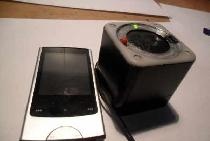Now there is a huge variety of audio amplifier circuits on microcircuits, for any needs, for any supply voltage, with different output powers. Microcircuit amplifiers are easy to create and do not require special settings, unlike transistor amplifiers, but they also have good characteristics. That is why microcircuit amplifiers are now used everywhere: in car radios, computer speakers, televisions, and music centers. One of these chips is the fairly popular TEA2025b. It can be found in many computer speakers or portable portable acoustics. This microcircuit provides an output power of 1-2 watts, consumes a small current and does not require a radiator, while its power is quite enough to sound a small room. Another advantage of TEA2025b is that it contains two channels at once, i.e. To build a stereo amplifier, just one microcircuit is enough.
Amplifier circuit
The circuit does not contain any expensive or scarce parts.The capacitors C3 and C4 in it are isolation capacitors, although the amplifier is not of the Hi-Fi category, it is still advisable to use film ones. If desired, their capacitance can be increased from 220 nF to 0.5 - 1 µF, which will slightly increase the level of low frequencies. P1/A and P1/B in the diagram are a double variable resistor (potentiometer), with its help the volume is adjusted. Its rating is not so critical; you can take it in the range of 10-50 kOhm. Diode D1 serves to protect the circuit from polarity reversal, because if a voltage of the wrong polarity is applied to the microcircuit, it will immediately burn out. The diode will prevent such accidents. All capacitors in the circuit must be taken at a voltage no less than the supply voltage of the amplifier. Speakers may have an impedance of 4 ohms or higher. It is worth considering that the lower the speaker impedance, the greater the amplifier power will be. The best option is 8 ohms. During operation, the microcircuit may heat up slightly, this is normal, because its case does not provide for the installation of a radiator.
Amplifier assembly on TEA2025b chip
The creation of any electronic device begins with the manufacture of a printed circuit board; you can make it at home using the LUT method.
Download the board:
A file with a drawing of the printed circuit board is attached to the article; there is no need to mirror it before printing. The board is made on a piece of PCB measuring 60x35 mm. The LUT method has been described more than once on the Internet; I will give only a few photographs of the process of creating a printed circuit board.
After the board is ready, you can solder parts into it. It is advisable not to solder the power wires and outputs to the speakers into the board, but connect them using terminal blocks. For convenience, the signal wire is connected to the board using a 3.5 jack connector.The wire from the sound source to the amplifier board must be shielded, otherwise extraneous noise cannot be avoided.
A few words about nutrition. The optimal supply voltage for this amplifier is 9 volts. It will work starting from 3 volts, but the output power will be significantly less. In rest mode, i.e. when no signal is being input, the amplifier consumption is approximately 40-50 mA at a supply voltage of 9 volts. When a signal is applied to the input, consumption increases to a level of 150-200 mA. Before turning it on for the first time, you must turn off the speakers, plug an ammeter into the supply wire and measure the current consumed by the circuit. If it is significantly higher than 50 mA, and the microcircuit heats up quickly, then you need to look for an error in the installation. If the current consumption is completely zero, then the circuit is not working, you also need to look for the error and check that the power supply is connected correctly. If, when you first turned it on without speakers, nothing exploded, and the current consumption is normal, then you can connect the speakers and send a signal to the input. The signal source for the amplifier can be a player, computer, telephone, or any device that has a linear output.
Thus, on the TEA2025b chip you can build a simple amplifier that does not require tuning. It consumes little current and has low heat generation, which means it belongs in portable audio systems or simple computer speakers where high-quality sound is not required. Happy build!
